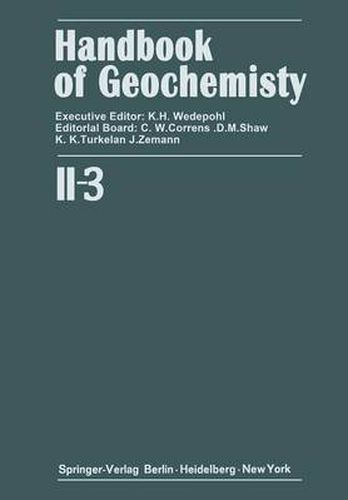Readings Newsletter
Become a Readings Member to make your shopping experience even easier.
Sign in or sign up for free!
You’re not far away from qualifying for FREE standard shipping within Australia
You’ve qualified for FREE standard shipping within Australia
The cart is loading…






This title is printed to order. This book may have been self-published. If so, we cannot guarantee the quality of the content. In the main most books will have gone through the editing process however some may not. We therefore suggest that you be aware of this before ordering this book. If in doubt check either the author or publisher’s details as we are unable to accept any returns unless they are faulty. Please contact us if you have any questions.
The literature on the geochemistry of gallium is very extensive and several problems arise in an attempt to summarise the available information in a short account. Only a small proportion of the many determinations of gallium in rocks and minerals has been made by the most precise and accurate procedures, and ana lyses by emission spectrographic methods constitute a dominant part of the data given here. In Table 31-1 are summarised the results of determinations of gallium in two standard rocks by various procedures. These results show that the generally less precise spectrographic procedures give, on average, values of adequate accuracy. In view of this and also the quite low dispersion of gallium in common rocks and minerals, the average results of the less precise analyses often constitute abundance data of reasonable quality. Individual determinations or whole series of determina tions by these methods are sometimes inaccurate, however, and it remains difficult to assess questions such as the extent to which differences in concentrations recorded for various areas represent genuine regional variations as distinct from systematic analytical errors. Furthermore, the low dispersion of gallium leads to an interest in relatively small variations in processes such as magmatic differentiation, and these variations tend to be obscured in many investigations through the use of imprecise methods.
$9.00 standard shipping within Australia
FREE standard shipping within Australia for orders over $100.00
Express & International shipping calculated at checkout
This title is printed to order. This book may have been self-published. If so, we cannot guarantee the quality of the content. In the main most books will have gone through the editing process however some may not. We therefore suggest that you be aware of this before ordering this book. If in doubt check either the author or publisher’s details as we are unable to accept any returns unless they are faulty. Please contact us if you have any questions.
The literature on the geochemistry of gallium is very extensive and several problems arise in an attempt to summarise the available information in a short account. Only a small proportion of the many determinations of gallium in rocks and minerals has been made by the most precise and accurate procedures, and ana lyses by emission spectrographic methods constitute a dominant part of the data given here. In Table 31-1 are summarised the results of determinations of gallium in two standard rocks by various procedures. These results show that the generally less precise spectrographic procedures give, on average, values of adequate accuracy. In view of this and also the quite low dispersion of gallium in common rocks and minerals, the average results of the less precise analyses often constitute abundance data of reasonable quality. Individual determinations or whole series of determina tions by these methods are sometimes inaccurate, however, and it remains difficult to assess questions such as the extent to which differences in concentrations recorded for various areas represent genuine regional variations as distinct from systematic analytical errors. Furthermore, the low dispersion of gallium leads to an interest in relatively small variations in processes such as magmatic differentiation, and these variations tend to be obscured in many investigations through the use of imprecise methods.